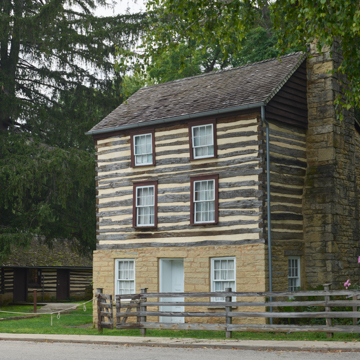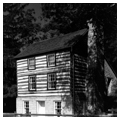The arrival of lead miners in Mineral Point and its environs marked the beginning of Euro-American settlement of Wisconsin. The quarrying and stonecutting techniques of immigrant Cornish miners helped create limestone and sandstone buildings of remarkable quality in Mineral Point. With more than five hundred historic buildings, the Mineral Point Historic District encompasses nearly the entire limits of the town. The most cohesive group is at this museum complex operated by the Wisconsin Historical Society.
Early in the twentieth century, Pendarvis gained special significance as one of Wisconsin’s pioneer historic preservation projects. Lifelong partners Edgar Hellum and Robert Neal (a descendent of a Cornish miner) rehabilitated the stone and log miners’ houses on Shake Rag Street in 1935. The first of their restored buildings was Pendarvis House, where they opened a small restaurant, serving Cornish pasties and saffron cakes. Once the home of miner Henry Williams, the single-story, side-gabled cottage was built c. 1845 of limestone chiseled to a smooth surface. The kitchen wing and the flagstone terrace at the rear were added to accommodate the restaurant. The two-story Trelawny House (c. 1843) has a dressed stone facade with corner quoins and side walls built of rough undressed stone. Both the Pendarvis and Trelawny houses are thought to be the work of Cornish stonemasons James Carbis and Richard Thomas. Of the several log buildings at the museum complex, only the Polperro House (c. 1843) is original. Hellum and Neal discovered that beneath the wooden siding of an undistinguished L-shaped house was this log structure, two-stories high, atop a limestone first story.
Also on the museum grounds but at some distance from the main part of the complex is the Merry Christmas Mining Building (c. 1845; 200 Merry Christmas Lane). It appears to have been a combination office and residence for a lead-mining operation, although it takes its name from an early-twentieth-century occupant, a zinc mining company. The two-story, side-gabled building of randomly laid courses of buff-colored limestone with stone quoins and broad, flat lintels is vaguely Greek Revival.





